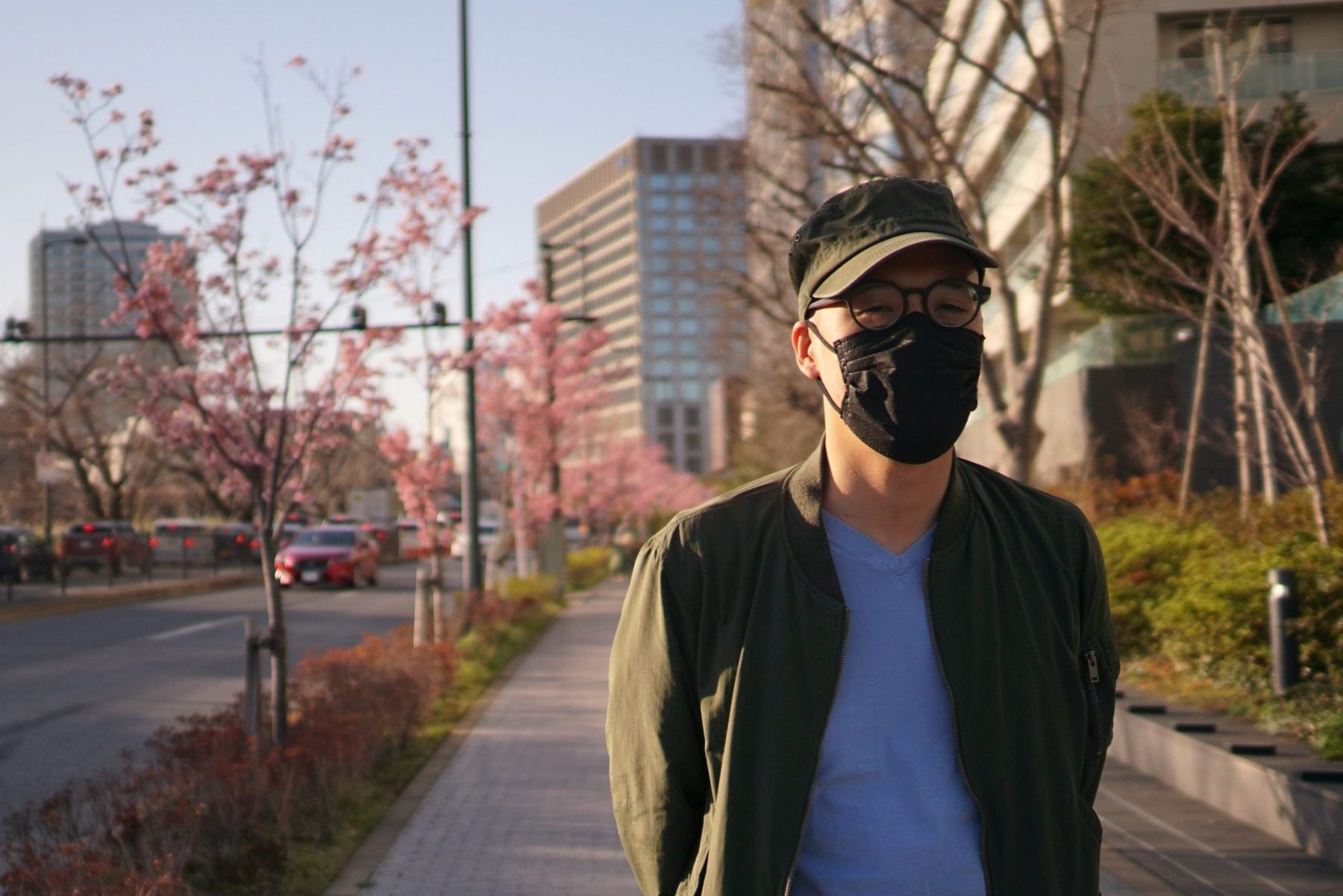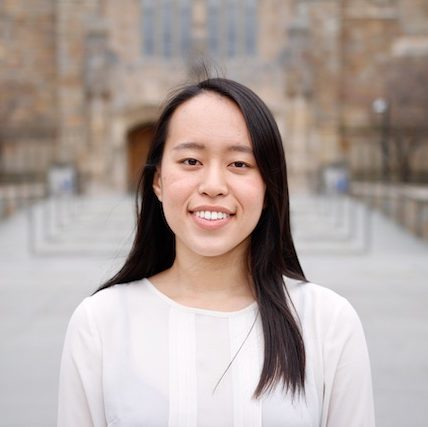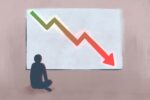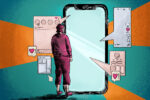A woman was kicked in the face while waiting at a bus stop. A 16-year-old student was accused of bringing the virus into his school from China, despite not being Chinese, and ended up in the emergency room after his classmate punched him in the head 20 times. Two Burmese American children and their father were stabbed in public by a man who justified his act of discrimination since he “thought the family was Chinese and infecting people with the coronavirus.” A 61-year-old Filipino man in Manhattan was slashed across the face by a stranger on the subway. Nobody on the train helped him as he bled out.
Since the appearance of COVID-19 in the United States in February 2020, Asian Americans have been subjected to verbal vitriol, violent physical attacks and racist discrimination linked to the pandemic.
Racially motivated attacks numbered over 100 a day throughout the country at the beginning of the pandemic. San Francisco State University created a project called Stop AAPI Hate that asks Asian American and Pacific Islander communities to self-report acts of hate and discrimination. Within two weeks of its launch on March 19, 2020, the tracker received almost 700 reports. Now, there are over 2,800 incidents since the beginning of the pandemic, according to its latest report.
Early reports of COVID-19 in the U.S. were often also accompanied by stock photos of Asians in masks. These reports focused on the hygiene of the seafood market in Wuhan and Chinese people’s taste for wild animals as a possible cause of the coronavirus. Memes and jokes about bats and China flooded social media. The press encouraged a narrative that focused on China, and Chinese people, as the origin of COVID-19.
And when our country’s leaders use the rhetoric of “Kung Flu” and “China Virus,” it signals that it is acceptable to blame the pandemic on Asians and anyone of Asian descent. A 57-page memo by the National Republican Senatorial Committee included arguments that calling COVID-19 the “Chinese virus” isn’t racist. In contrast, the World Health Organization warns against associating diseases with specific locations, to prevent stigma and backlash.
Our leaders essentially are asking for people to target Asian Americans, to harass and abuse an ethnic group, that despite their contributions to America’s history and growth, were never truly “American.” And for that reason, this distinction and targeted political rhetoric, racism and violence against Asian Americans has become state-sanctioned.
COVID-19 attacks aren’t just singular incidents, nor motivated by individual intents, that will “pass with time.” America never really “got over” racism against any racial group, be it Asians, Blacks, Native Americans or Hispanics. The situation with racially targeted attacks during the pandemic simply reflects the systemic racism embedded into America’s history and culture. From the Chinese Exclusion Act, to Japanese internment, to the post-9/11 discrimination against Muslims and South Asians, the United States has had a comprehensive history of making laws and national policies out of racial discrimination against ethnic groups.
A History Doomed To Repeat Itself
The legacy of white supremacy equates white bodies with purity and innocence, while nonwhite bodies are designated as unclean, uncivilized and dangerous. The tactic of “quarantining” Asian bodies, both physically and by identity, is a consistent trend in pandemics.
The first known incident of bubonic plague (also known as the Black Death) in the United States broke out in Hawaii in 1899, affecting the entire population. But only Chinese residents were forced to quarantine and were barred from travel to the continental United States. Then, in January 1900, officials attempted to “sanitize” Honolulu’s Chinatown by burning buildings where plague victims had died. The flames went rogue, consuming a fifth of Honolulu’s buildings and over 5,000 homes.
In 1900, San Francisco was plagued with outbreaks of the bubonic plague that had previously hit Hawaii, as well as cholera and smallpox. The city was notoriously corrupt, dirty and overcrowded; California’s 1848 gold rush had swelled the population by over 25 times. Chinatown was the city’s most congested and impoverished district, with ramshackle wooden buildings carved up into tiny, packed spaces.
Rather than identifying the poor sanitation infrastructure and crowded residential structures as the source of disease, politicians pointed to the inherent uncleanliness of Chinese immigrants and Chinatown. As a result, only Chinatown was put under quarantine, shutting down entire ethnic communities and businesses critical to residents’ livelihoods. Authorities prevented any movement of food in and any of its inhabitants out, believing that the unclean food was the source of the disease. Although the bacterium that causes bubonic plague, Yersinia pestis, had been identified in 1894, little was known about transmission, treatment or prevention. The majority view at that time was that bubonic plague was a “racial disease” to which people of European ancestry were immune.
As fingers were pointed and races were blamed, the disease continued to rage on throughout San Francisco. It wasn’t until 1908 that San Francisco finally became plague-free, thanks to new research linking rat and flea infestations as the true cause of the plague.
The xenophobic propaganda perpetuated about Chinese uncleanliness was what inspired the Chinese Exclusion Act in 1882 in the first place, the first and only law in the United States that barred immigration solely based on race. Though the Chinese Exclusion Act was originally meant to last 10 years, the ban was extended for another decade and eventually encompassed Japanese, Indian, Filipino, Korean and other Asian immigrants. The law was not officially repealed until 1943.
More recently, during the 2003 SARS (Severe Acute Respiratory Syndrome) epidemic, the discourse in the United States focused on Chinatown as the epicenter of the disease. Studies suggested that 14 % of Americans reported avoiding Asian businesses and Asian Americans experienced increased threat and anxiety during SARS.
Discrimination Continuing to Prevail
It wasn’t just Chinese bodies that were deemed as “disease-ridden” or “dangerous.” In the early 20th century, American officials in the Philippines, then a formal colony of the U.S., justified the continued U.S. colonial rule by denigrating Filipinos for their “tropical diseases” festering in their “unclean” native bodies. A rise in Indian immigration in the United States during the 1900s sparked a fear of what a Washington newspaper then described as “Hindu hordes invading the state.” During World War II, President Franklin D. Roosevelt issued Executive Order 9066, which imprisoned more than 120,000 Japanese Americans and Japanese immigrants in military camps.
Similarly, after the 9/11 attacks in the United States, retaliation wasn’t just against Arabs or Muslims — it was against anyone who didn’t look white, anyone who could even remotely look like the “enemy.” Violence and hatred against the perceived enemy resulted in incidents targeting Sikhs, second and third generation Indian Americans, and even Lebanese and Greeks.
Throughout the COVID-19 pandemic, violent attacks and racial discrimination against Asian Americans have emerged as non-Asian Americans look for someone or something Asian to blame for their anger and fear about illness, economic insecurity and stay-at-home orders. The rise in hate crimes speaks to a deeper problem in which the term “Asian American” has become synonymous with the stereotype of the “model minority.” This is the idea that Asian Americans are perceived to have higher educational and financial success and fewer social and psychological problems than other racial groups in contemporary American society. As a result, compared to African Americans and Latinos, Asians experience overtly violent forms of racism less frequently.
But the model minority myth is simply a tag that deems Asian Americans “clean” enough to associate with whites, “civilized” enough to belong in society. It undermines and pits Asian Americans against African Americans, indigenous peoples and other marginalized groups in the United States. In the words of writer Frank Chin in 1974, “Whites love us because we’re not black.”
And this “belonging” comes with a price. For example, in 1943, a year after the United States imprisoned Japanese Americans, Congress repealed the Chinese Exclusion Act. The repeal was enacted not out of altruism toward Chinese migrants, but to advocate for a trans-Pacific alliance against Japan and the Axis powers. In 1965, Lyndon B. Johnson’s administration signed the Hart-Celler Act into law, which shifted immigration from an exclusionary quota system to a merit-based points system, benefiting Africans and Asians. However, it immensely restricted Latin American immigration. These laws and national policies have only ever pitted minority against minority, in reaching for acceptance by the white majority.
But as the pandemic and history have shown, as soon as a new fear emerges, the façade of belonging —that gilt of Americanism that cloaked Asian Americans from their “unclean” past — is erased.
How To Help
There are countless ways that you can help prevent violence and report hate crimes, while showing solidarity with the Asian American community during these times. Listed below are a few of these ways.
Stop AAPI Hate — a project based out of San Francisco State University that asks AAPI communities to self-report acts of hate and discrimination. Stand Against Hatred is a similar tracker by Asian Americans Advancing Justice where individuals can read about the incidents that have been reported.
Encourage those who have experienced racial bias and abuse to report their experiences, and/or seek counseling, support or treatment. The Department of Health and Human Services estimates that only 6.3% of people over the age of 18 in the AAPI community seek and receive mental health services, as compared to 18.6% of non-Hispanic white adults, partly due to cultural and language barriers. A good resource for helping someone seek culturally competent care provided by the National Alliance of Mental Health can be found here.
Help create safer spaces for Asian Americans by providing them with community resources. Ask elderly members of the AAPI community if you can do their grocery shopping to keep them safe from both the coronavirus and anti-Asian racism. Act as an escort to deter attacks that might happen if they are alone.

















